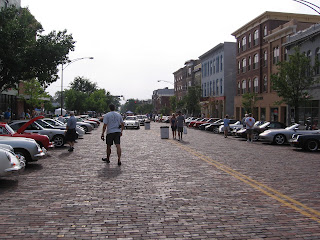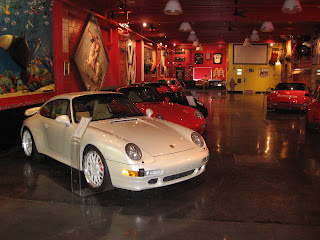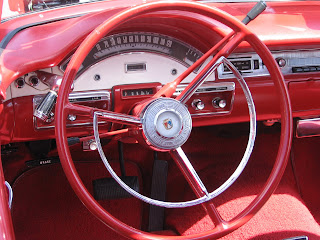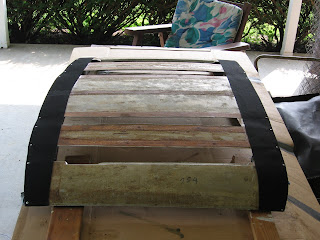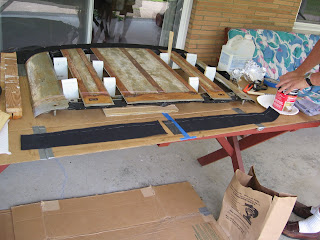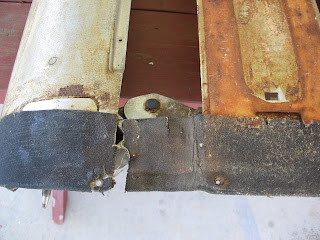Maitham Asadallah
Dr. Heitmann
HST 344
June. 28, 2011
My “Auto” Biography
From my childhood back in the early 1980’s I used to buy and collect car toys, during my play
with them, I loved how I used my imagination to create different scenarios like chasing other car
or let my car to jump over another one. My relationship with cars started when I saw my Father
and my mother driving their cars while I used to set in the back seat, thinking how they can
control this amazing transportation machine, looking at the road sidewalk bricks asking myself
how fast it is running, how can the key turn on this fabulous machine. At that time car to me was
the enjoyment, fun, independence and spectacular machine. In fact at that time I preferred to get
into my father’s car for a ride as it was a light blue 500 SEL Mercedes Benz, I loved the way my
father used to drive it with high speed, I liked the smell of its internal leather, I liked its emblem
which is mounted in the front of the engine hood, I liked the sound of the engine whenever he
used to speed up. I used to get really sad whenever the engine temp shoots up, and my Father had
to pull aside and turn off the engine and wait till it cools down, later on I understood that at that
time the Mercedes Benz cars are not designed to be used in a very hot climate like back home in
Kuwait when the temperature in summer used to reach 120 F, to fix this problem they used to
modify the engine cooler size or install one more cooling fan. There are many factors made me
very engaged with cars.
One of the main reasons which made me very attracted to sport cars is a TV series called Knight
Rider, and I do remember the actor who played as Michael Knight who used to drive the black
Pontiac trans am, from this series I realized how can a car would make me a powerful man who
Chases bad guys. The idea of making the car as a talking machine, making it as a car with soul
was something fabulous, and it was named as Kate, I used to wait for every episode to enjoy the
show. What made me to like this car is the options, abilities and the output of it.
The climate back home in Kuwait is very hot and dusty which makes cars get dirty so fast, but
this was an advantage to me Because I used to ask my parents if they would allow me to wash
their cars during their nap time after the lunch, and they have never refused to do so, till one day
my father realized that after when I am done from cleaning the cars, I used to set behind the
wheel, start the engine and I take a drive in our neighborhood, it was one of the most happiest
moments in my life. Defiantly after that my father decided not to hand over the key to me and I
had to wash and clean cars only from outside, however, I was still enjoying washing them.
On 1990 during the Iraqi invasion to Kuwait, we had a problem with disposing the house trashes,
Even our neighborhood families faced the same problem, because at that time all government
ministries inside Kuwait seized working, so nobody was there to take care of trashes business.
It came to our notice that other neighborhoods started collecting trashes in a remote
Non residential area and they have started firing it up to get rid of the smell and flying insects,
At That time I was 13 years old, so my father decided to give me this task to collect all our
neighborhood trashes and do the rest, at that time my father finally gave me the permission to
drive a 1990 Daihatsu Rocky jeep to perform the job, but there was a problem , it is a manual
transition car, it was my first time to drive a MT car, the interesting part is my older brother gave
me only a 15 minutes training on how to drive a MT car, then I started my job, I was really
happy because it was the first time to serve my country during very tough time, helping my
neighborhood and the most important thing enjoying the MT car driving because I used to let the
engine pressure gauge marker to reach the red zone before I transfer to the next gear level. trying
to get the Formula 1 cars sound ! but it never happened. I know maybe it sounds stupid but it was
a FUN.
On 1995 I graduated from high school in Kuwait, it a was a time to get a driving license, once I
got it my brother gave me his 1994 Jeep Cherokee and my father got him a V12 convertible
Jaguar, It was my brother idea “what a smart move !” I hated him at that time, however, I
enjoyed driving the jeep, it was a limited one with full options or a loaded one, I enjoyed driving
it on road and on the desert. when I got my job as field operator in a petrochemical company, I
made my choice and I got a new silver 1996 Yukon, it was an amazing car. Very smooth on road
and on desert. I got very engaged with Yukon because it was really reliable, therefore, on 2002 I
have traded in the 1996 one and got a new 2002 black Yukon, the design has changed
completely however, still I liked the style and it was designed to be more smooth on road.
When I got the scholarship to get a chemical engineering degree in the US, my wife got pregnant
with twins and we had already two boys, so the most convenient car for us is a minivan, so we
decided to go for and 2006 Uplander, it is really comfortable vehicle and very smooth, we have
travelled to Niagara falls, NY , Pittsburg and Chicago, I do prefer road trips in the united states
because of the nice weather and the well contracted roads. now my 4 boys are enjoying
watching TV in the back, the TV makes them very quiet otherwise they will not stop fighting and
I will get crazy.
